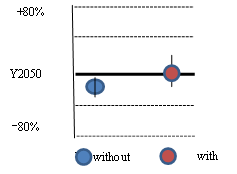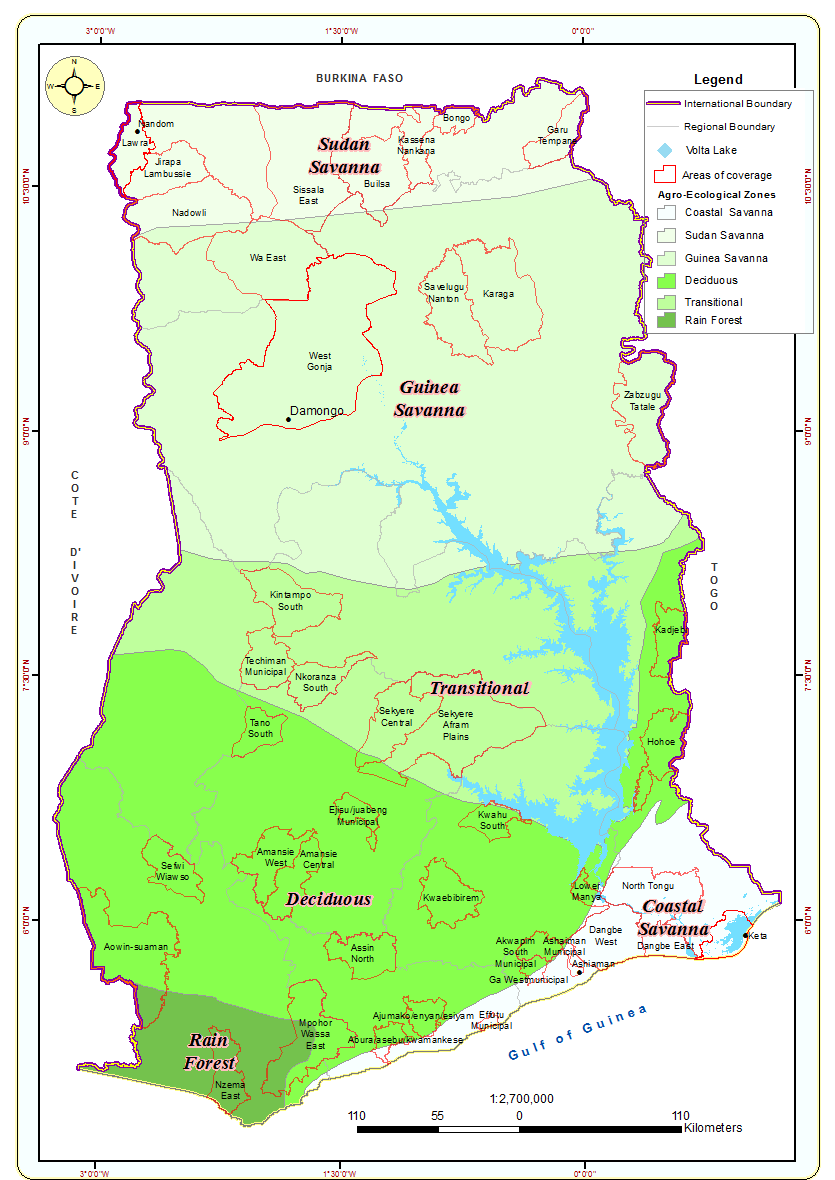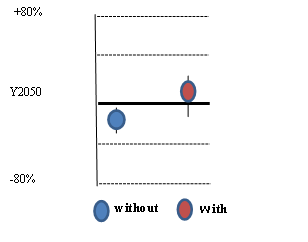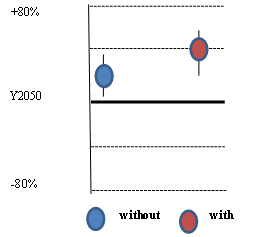hier komt mijn tekst
Maize
By 2050 maize yields are expected to have declined as a result of climate change, when no adaptation package is applied. Figure 1 shows that without adaptation, there would be negative production by 2050 whereas with adaptation, yields will show positive results.
Peanut
By 2050, even without any adaptation package for climate change, peanut yields are expected to still be positive in production (Fig. 2). With adaptation, the yields will rise significantly.
Millet
By 2050 millet yields are expected to have declined as a result of climate change, when no adaptation package is applied (Fig.3). The situation is expected to be worse than for maize. With adaptation, there would be positive yields but just marginal.

Fig. 3: millet
Generalization of results
The results can be generalized for the Upper West and Upper East Regions of Ghana. This is because the two regions fall under similar climatic conditions as Navrongo and also, most parts of the two regions fall under the Sudan savanna agro-ecological zone (Fig 4). A smaller portion of the southern parts of these regions fall under the Guinea savanna zone in which conditions are very similar.

Fig 4: Map of Ghana showing location of Navrongo (Kasena Nankana) in the Sudan Savanna Agro-ecological Zone.
Additional information
Crop composition: There are varieties of maize and millet that have short term duration and which can also be heat tolerant. Researchers should improve on all these varieties and Extension should continue to educate farmers as such.
Choice of crop varieties: Farmers should be assisted (especially by Extension) to select varieties that are very suitable for the specific areas especially in the Sudan Savana.
Growing period: Meteorological Services in Ghana predicts the rainfall patterns for each season in Ghana. Since most farmers do not tune their radio or television sets to listen to these forecasts, again, Extension should pick this up and inform the farmers accordingly.
Crop management: This should include crop rotation and mixed farming by integrating livestock into the cropping systems. This will enable crops to benefit from manures and the livestock also benefit from crop waste.


